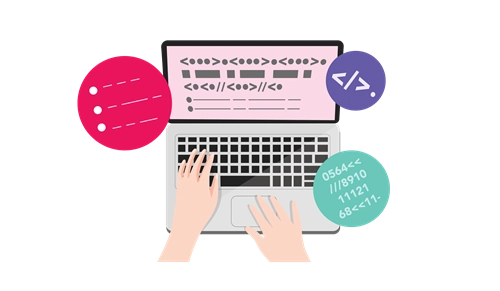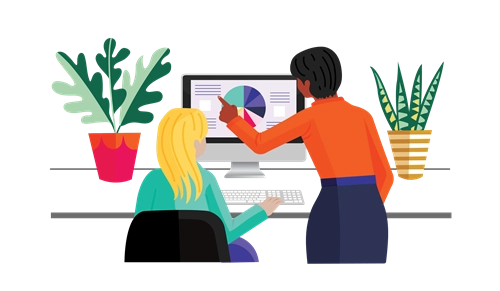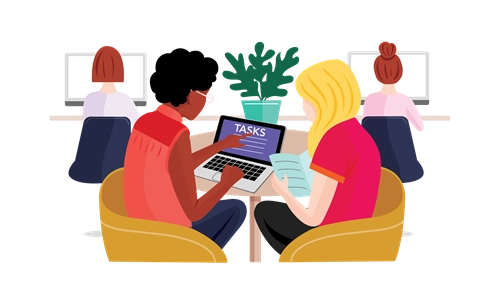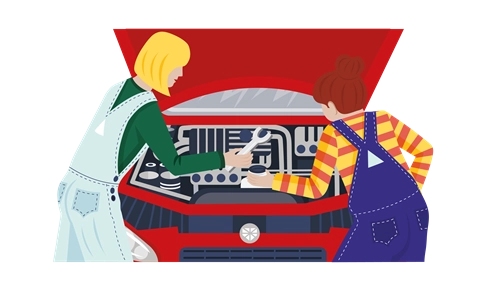What's the context?
Overview
Women only make up 15% of the STEM workforce in Australia. Over the past decade, this figure has only risen by 5 percentage points (STEM Equity Monitor 2022), although there have been a number of initiatives to try to improve women’s participation in all stages of the STEM pipeline.
Research has shown that girls’ disengagement with STEM starts as early as the primary years of school, with girls thinking that STEM is not for them and that they lack natural ability in STEM, and actively opting out of STEM learning. In secondary school, these experiences are often consolidated, with the result that girls don’t pursue STEM pathways to VET or university, and are under-represented in STEM careers.
In an environment where STEM jobs are on the rise, and STEM skills are highly valued by employers, not only are Australian girls missing out on rewarding, challenging careers, but STEM fields are missing out on potential talent and the benefits of a diverse workforce.
Only
21%
of girls aspire to a STEM career, compared to 42% of boys
Women only represent
37%
of university STEM enrolments
Women only represent
15%
of people in STEM-qualified occupations
To figure out why girls are opting out of STEM at school we need to look at the messages girls are receiving about STEM from their parents and carers, teachers and peers – and from society more broadly. Once we understand how the environment and people around girls might be reinforcing negative perceptions of STEM we can actively challenge those and support all students to find their place in STEM.
There are three main factors that can help us understand why girls aren’t identifying with STEM and pursuing STEM pathways:
- Girls struggle with a fixed mindset when it comes to STEM
- Gender stereotypes are prevalent and hold girls back from pursuing STEM
- Unconscious bias can mean that educators and parents and carers inadvertently perpetuate gender stereotypes.
Read more about each of these factors below.
Fixed mindset
Girls often have a strong ‘fixed mindset’ when it comes to STEM (Boaler, 2014). That is, they perceive that STEM requires natural talent, and that because they may struggle with aspects of STEM learning, they cannot succeed in it. By explicitly teaching and encouraging a growth mindset, teachers can support girls’ engagement and achievement in STEM.
Students may view intelligence as a fixed quantity that they either possess or do not possess (a fixed mindset) or as a malleable quantity that can be increased with effort and learning (a growth mindset). Dweck et al (2014)
You can read more about encouraging a growth mindset amongst all students in this paper on Academic Tenacity: Mindsets and Skills that Promote Long-Term Learning (2014).
Gender stereotypes
A stereotype is a widely held, often unconscious, belief or generalisation about the behaviours, characteristics and roles performed by a particular group. We all use stereotypes to make quick decisions, but they can lead to inaccurate and unfair judgements.
Gender stereotypes can hold girls back from pursing STEM subjects at school, or a career in STEM. Gender stereotypes come from lots of places – the media, family, friends, teachers, schools, textbooks and other learning resources. Continued exposure to gender stereotypes affects how girls view themselves, their wellbeing, their attitudes to relationships, and the way they participate in school and work.
A large-scale US study found that the gender gap in science and maths achievement in a country is significantly correlated with implicit gender-science stereotypes in that country (Nosek et al, 2009).
Gender stereotypes consistently tell girls that women do not belong in STEM, that girls do not have natural talent in STEM, and that STEM pathways are not in accordance with how girls see themselves; that is STEM is not creative, collaborative nor for the social good. These stereotypes negatively affect girls’ beliefs about their own capacity, and also influence teachers’ and families’ expectations and aspirations for girls in STEM.
Stamping out stereotypes from your classroom and school can make a significant difference for girls.
Unconscious bias
Unconscious bias, or implicit bias, refers to the attitudes and reactions that affect our behaviour and understanding on a daily basis, without us necessarily being aware of it. For example, as in the case of gender bias, teachers can hold unconscious assumptions about gender that result in the different treatment of boys and girls in the classroom. It’s important to realise that these assumptions can be in conflict with our conscious beliefs.
A recent Australian study found that teachers tend to teach girls less science content than boys (Newall, Gonsalkorale, Walker, Forbes, Highfield and Sweller, 2018).
Unconscious bias cannot be easily removed from our thinking, but by recognising its existence and effect, we can consciously change our stereotyping behaviour. There are also a number of ways to actively engage female students in STEM directly and through the support of families and the community.
There is no evidence that boys are naturally better at maths and science than girls (TIMSS, 2011).
Explore the Creative Equity Toolkit, a project run by Diversity Arts Australia and The British Council, to learn more about unconscious bias.
Intersectionality and encouraging diversity in STEM
Intersectionality refers to the interconnected nature of different aspects of our identity such as gender, race, class and age. These different factors can overlap and result in individuals experiencing layers of disadvantage or discrimination. When thinking about how to create an inclusive STEM environment, we need to think about how these different factors may affect students in our classroom.
This layering of disadvantage is sometimes referred to as a 'double jeopardy', meaning individuals may face discrimination on multiple levels. In Australia, more than half of the university-qualified women in STEM were born overseas, but as a group they experience four times higher unemployment rates.
'Be the change you have not yet seen'
Dr Morley Muse on intersectionality in STEM In Australia.
FIND OUT MOREAnother study found that LGBTQ individuals faced a higher likelihood of encountering social marginalisation within their workplaces. Additionally, they were more likely to have their professional skills undervalued by their colleagues (Cech & Waidzunas).
Increasing diversity and embracing intersectionality in STEM is not only important for equality and access, but there are also real workforce benefits.
'Having individuals from all socioeconomic backgrounds, races, sexualities and genders ensures STEM innovation is unbiased and can offer a safer and more inclusive workspace for all… Scientific progress is likely to be far more efficient and inclusive when there is a diverse workforce with varying life experiences and expertise.’ (Andrews-Clark, 2023)
We need to keep in mind that while sex and gender play a large part of the picture when it comes to unequal involvement in STEM, it is not the whole picture.
Read more about why intersectionality matters in STEM in this article from The Oxford Scientist.
Videos about building STEM capital and engaging girls in STEM
Resources
The following infographics explore the challenges and opportunities for girls in the current STEM environment:
- Australian Academy of Science Women in STEM Decadal Plan
- Department of Education WA Why a STEM Pathway is the Smart Choice
- Department of Innovation, Industry and Science Youth in STEM research
- Office of the Chief Scientist Women in STEM:A story of attrition
- Australian Government Advancing Women in STEM
- Department of Education WA Why STEM Matters
- ELearning Infographics The State of Women in STEM Careers
- Office of the Chief Scientist Australia's STEM Workforce










